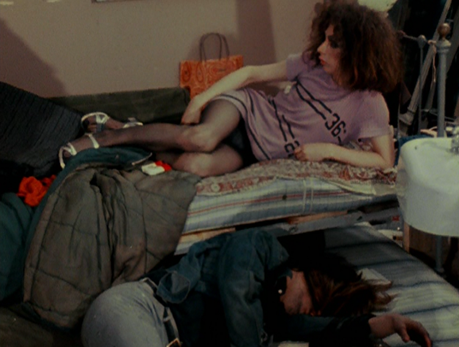Before I get any angry comments in the comments section, yes I am aware that Trash was written and directed by Paul Morrissey (of no relation to Girlfriend in a Coma Morrissey), not Andy Warhol– although “written” is a pretty bold claim for a film that’s primarily improvisation. The level of vitriol and malice that separated the two is truly unfortunate, especially when one considers the level of talent and, at times, genius, they both possessed.
Warhol was a visionary independent film director, and his greatest works– things like the iconic Empire, the complex Chelsea Girls, or the first adaptation of A Clockwork Orange in Vinyl– are masterpieces on par with any of his greatest paintings. Paul Morrissey took over the helm of the Factory films after Warhol was nearly assassinated by an actress/activist (the despicable Valerie Solanas, who is far too celebrated in pop culture) and began producing equally iconic, if entirely different, films.
Trash is the second in a series of great films starring the inimitable Joe Dallesandro, one of the most mainstream of Warhol’s superstars. Although you may not know the name, you might recognize his moniker ‘Little Joe’ as in, ‘Little Joe never once gave it away.’ Even if you’re not a Lou Reed fan, you’ll certainly recognize the most famous crotch-shot of the 70′s, the Sticky Fingers album cover, which was Dallesandro as photographed by Warhol for the Rolling Stones. Dallesandro is magnetic on screen– all at once vulnerable and stoic, a perfect combination of child and lover. Dallesandro may well have been the most beautiful man of the underground film scene. Film critic Vincent Canby wrote of Dallesandro, “His physique is so magnificently shaped that men as well as women become disconnected at the sight of him.” Dallesandro’s blank beauty– one of Warhol’s most celebrated affects– is perfectly matched by co-star Holly Woodlawn, whose frenetic energy powers the thin narrative. Dallesandro plays a heroin addict in his quest to score some junk, while Woodlawn is his lover/protector. Woodlawn tries valiantly to get money for them to live, including faking a pregnancy for Welfare, but Dallesandro’s troubles lie far deeper than a lack of cash.

Trash is disjointed and episodic, and is not for everyone. If you need a strong narrative in your films, Trash will pretty much seem self-fulfilling, but there’s no doubting the screen presence of these two superstars at the height of their glory. As a true-to-life portrait of love, junk, and sex, you can’t ask for much better.

